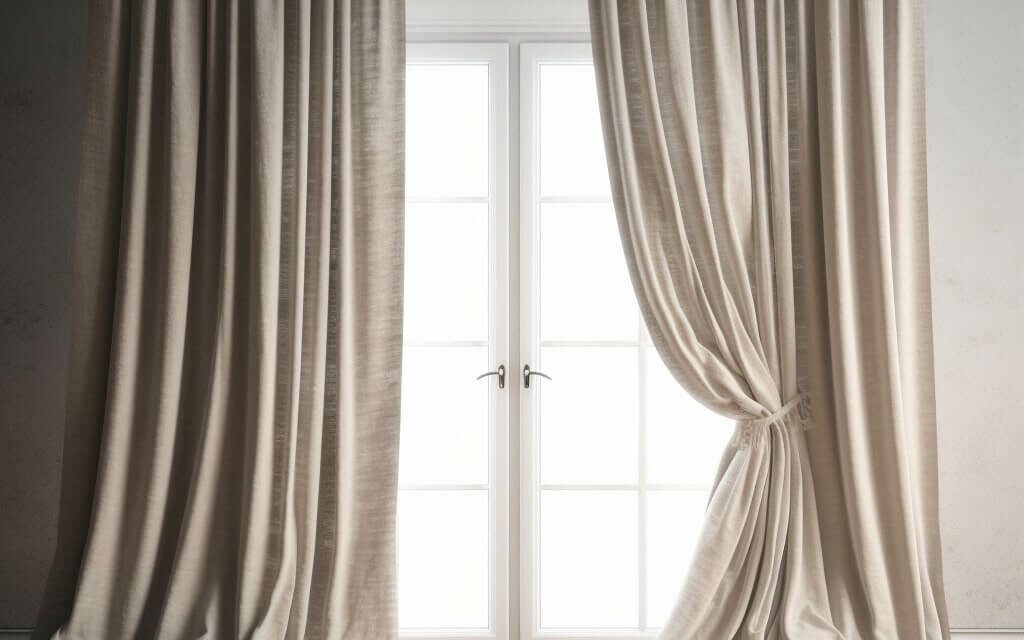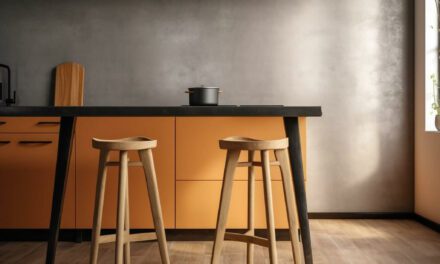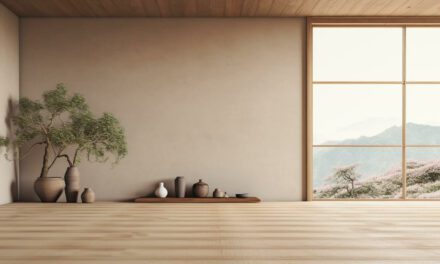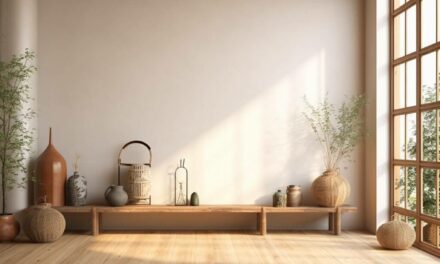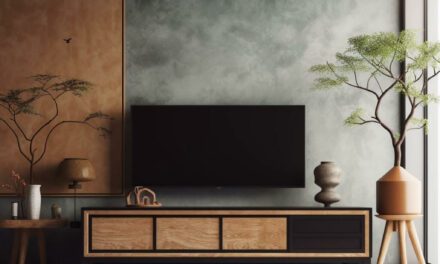I’ve developed an unerring appreciation for the transformative power of well-chosen curtains.
They are more than just pieces of fabric that provide privacy or block out light.
This guide will journey through the style, colors, materials, and minimalist patterns of Japandi curtains and how they can become the soulful heart of your home.
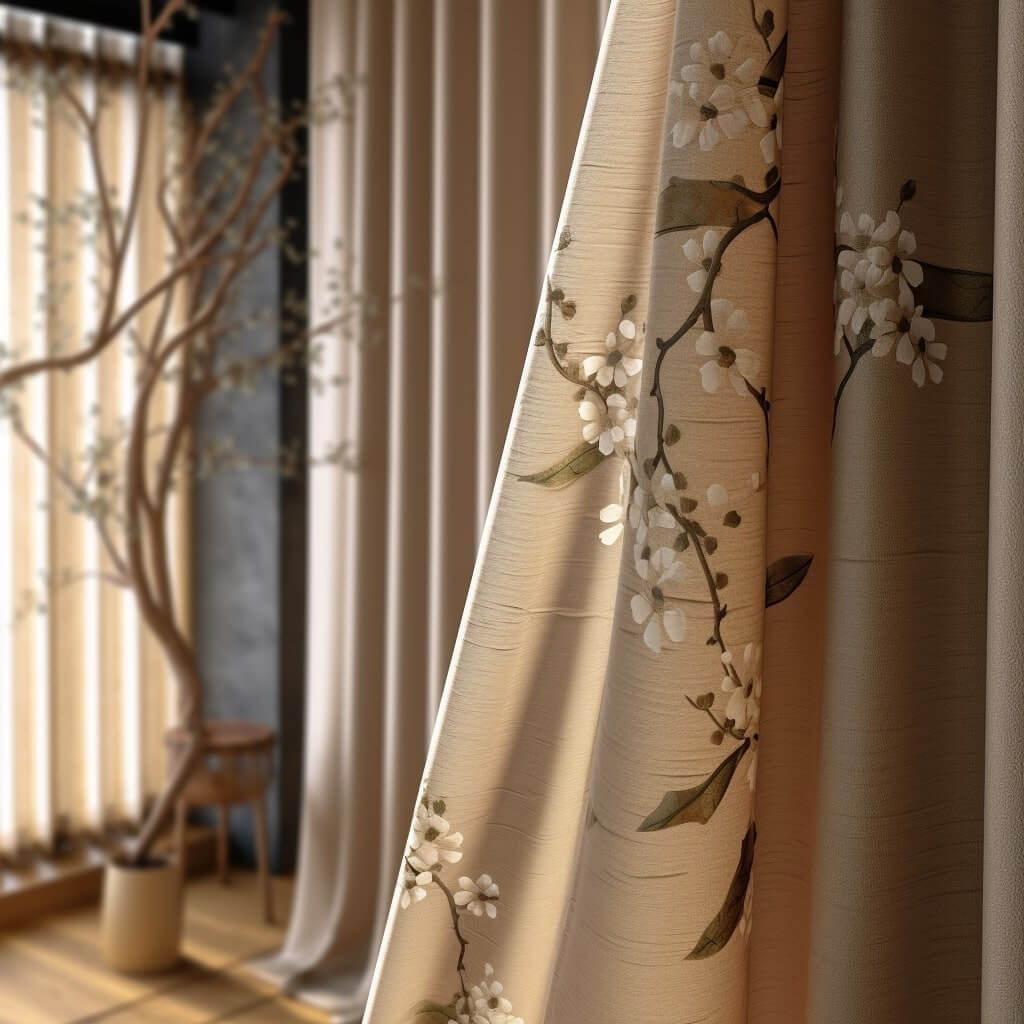
What are Japandi Curtains?
Japandi curtains are not merely a decorative feature; they’re a representation of a design philosophy that artfully blends two seemingly distinct yet harmonious aesthetics: Japanese and Scandinavian, or “Japandi” as it’s popularly known.
Defining Japandi
It beautifully converges the streamlined simplicity of Scandinavian design and the warmth, tranquility, and respect for nature inherent in Japanese aesthetics.
This fusion presents a compelling style that celebrates minimalism while retaining a strong focus on functionality and a deep connection with natural elements.
Japandi style, though contemporary, has roots that reach deep into the age-old traditions of Japan and the Nordic countries, reflecting the best of both worlds in an appealingly modern way.
When it comes to Japandi curtains, they embody the essence of this style through their colors, patterns, and materials.
You’ll find these curtains bearing muted, earthy colors and minimalistic patterns, often crafted with natural fabrics.
They seamlessly integrate with your space, creating an ambiance of serene sophistication.
Minimalism in Japandi Style
In my exploration of Japandi, one element that continually stands out is minimalism.
It’s the heartbeat of this design philosophy and finds beautiful expression in Japandi curtains.
I’ve always been drawn to the ‘less is more’ approach, and Japandi takes this to new heights.
There’s an enchanting beauty in simplicity, a philosophy rooted both in Japanese Zen culture and Scandinavian love for functionality and understated elegance.
Minimalism in Japandi isn’t just about the absence of clutter; it’s about carefully choosing items that bring both beauty and utility, creating a space that breathes and evolves with you.
Every piece, including the curtains, holds its value.
Therefore, in a Japandi-inspired space, curtains aren’t just window coverings; they become a vital part of the room’s personality, setting the tone for a calm, grounded atmosphere where every element serves a purpose and nothing is superfluous.
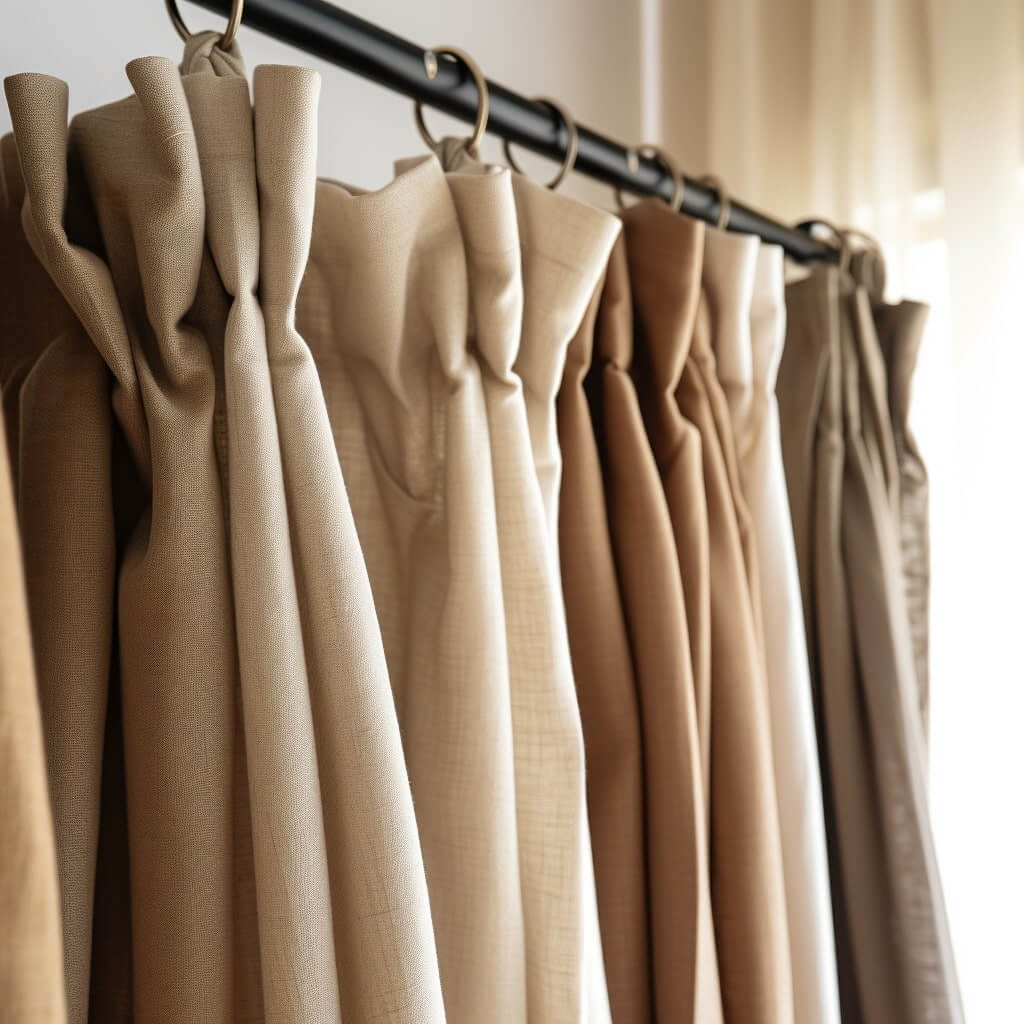
Japandi Curtain Style: Key Features
Immersing myself in the world of Japandi has revealed a fascinating fusion of design principles. This style is marked by key characteristics that echo in every element, and curtains are no exception.
Minimalistic Design
The concept of “less is more” resonates profoundly in the Japandi curtain style. It’s about striking a delicate balance between simplicity and elegance, where every line and shape has its purpose.
As I’ve adorned my own home with these curtains, I’ve found that their minimalistic design adds a serene, uncluttered feel to the interiors.
Yet, they’re far from bland or monotonous. They subtly command attention with their clean lines, simple patterns, and muted tones, adding a layer of sophistication without overwhelming the space.
It’s this thoughtful design, devoid of unnecessary frills, that makes Japandi curtains a focal point of the room in their quiet, understated way.
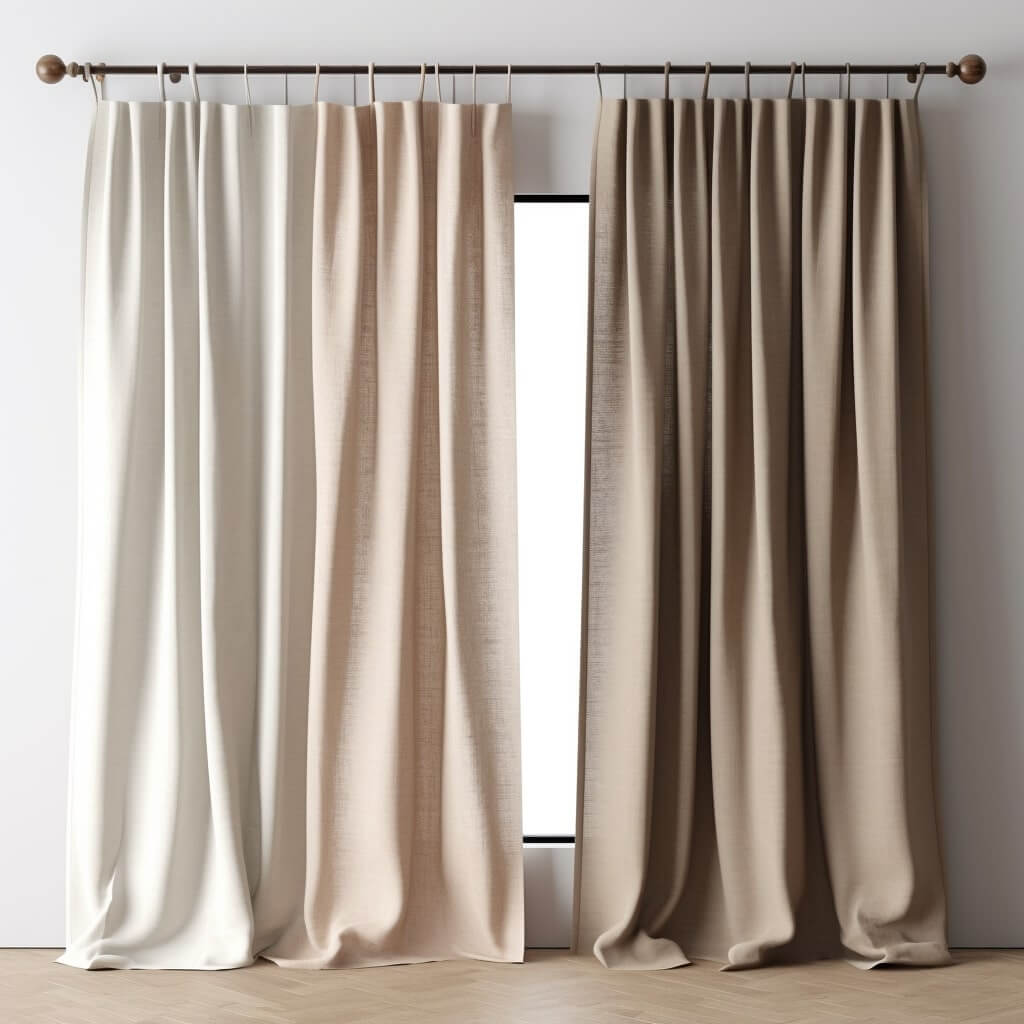
Natural Materials and Craftsmanship
Japandi is more than a style; it’s a celebration of natural beauty and fine craftsmanship. This ethos is palpably reflected in Japandi curtains.
They are typically crafted from natural fabrics such as linen, cotton, or silk, materials that resonate with the aesthetic of both Japanese and Scandinavian cultures.
The craftsmanship is equally commendable.
Each curtain is not just a product but a testament to the time and care invested in its creation.
As a lover of artisan-made goods, I deeply appreciate this aspect.
It not only ensures quality and longevity but also adds a touch of authenticity and uniqueness to each curtain.
Functionality and Beauty
One of the reasons I am so drawn to the Japandi curtain style is its exemplary fusion of functionality and beauty.
It’s not just about creating a visually pleasing space; it’s about designing a living area that caters to practical needs while promoting a sense of peace and wellbeing.
The curtains, with their light-diffusing qualities and pleasing aesthetics, contribute to this. They control the inflow of natural light, offer privacy when needed, and harmonize with other elements in the room.
This perfect blend of utility and beauty is what defines the Japandi curtain style for me, making it a true embodiment of the Japandi philosophy.
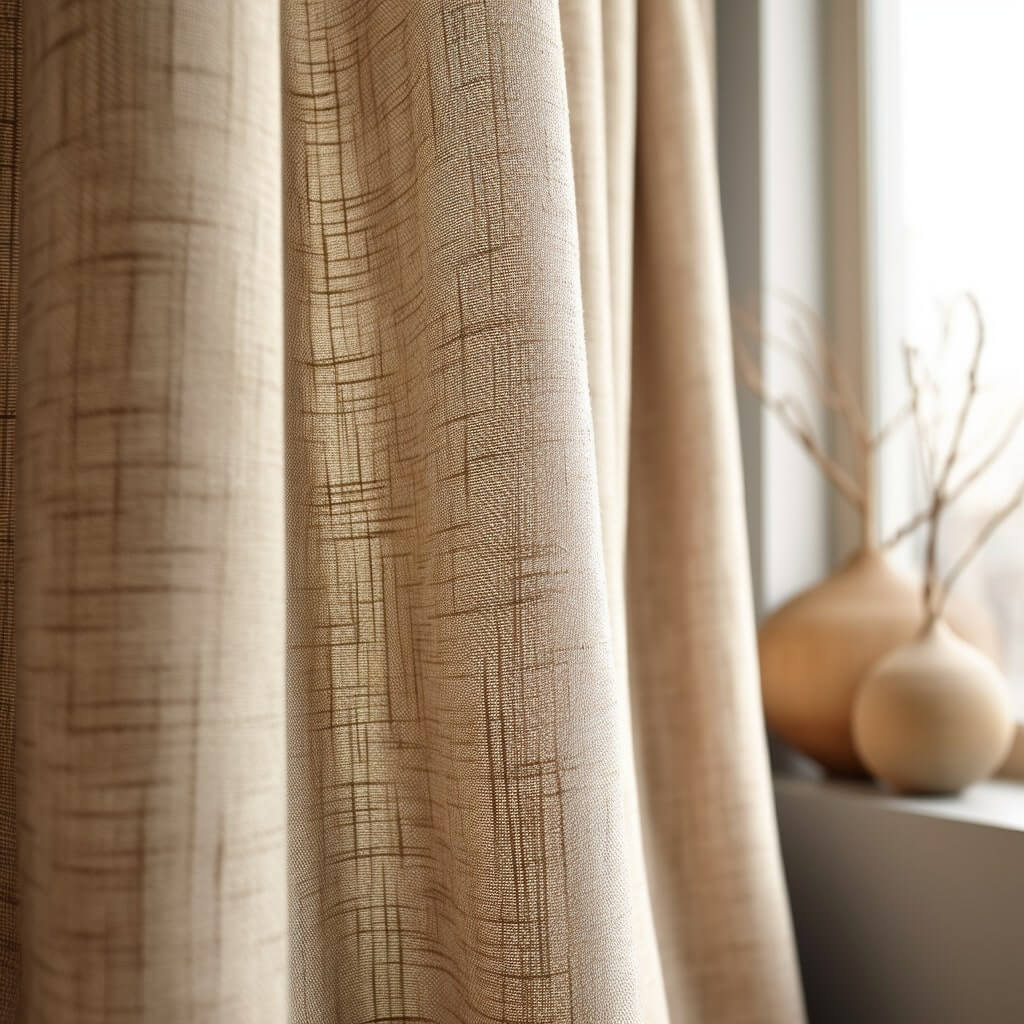
Colors and Patterns in Japandi Curtains
I’ve developed a profound appreciation for its distinct color scheme and patterns, which are as unique as they are meaningful.
Embracing the Japandi Color Palette
One of the key defining aspects of Japandi curtains that captivated me from the very beginning is their unique color palette.
It’s a thoughtful blend of muted and earthy tones that induce a sense of calm and tranquility in the home.
When choosing Japandi curtains, I tend to gravitate towards subdued shades like off-whites, grays, soft pinks, and deep forest greens.
These colors, inspired by nature, evoke an immediate sense of peace and are a vital ingredient of the serene atmosphere that Japandi aims to create.
But the beauty of the Japandi color palette doesn’t end with calm and muted tones. There’s also room for stronger, more vibrant hues that bring a sense of warmth and energy.
Deep indigos, rich earthy browns, and charcoal grays add depth and contrast, enhancing the visual interest while staying true to the natural inspiration.
This balance between soft and strong, light and dark, perfectly encapsulates the harmony inherent in the Japandi style.
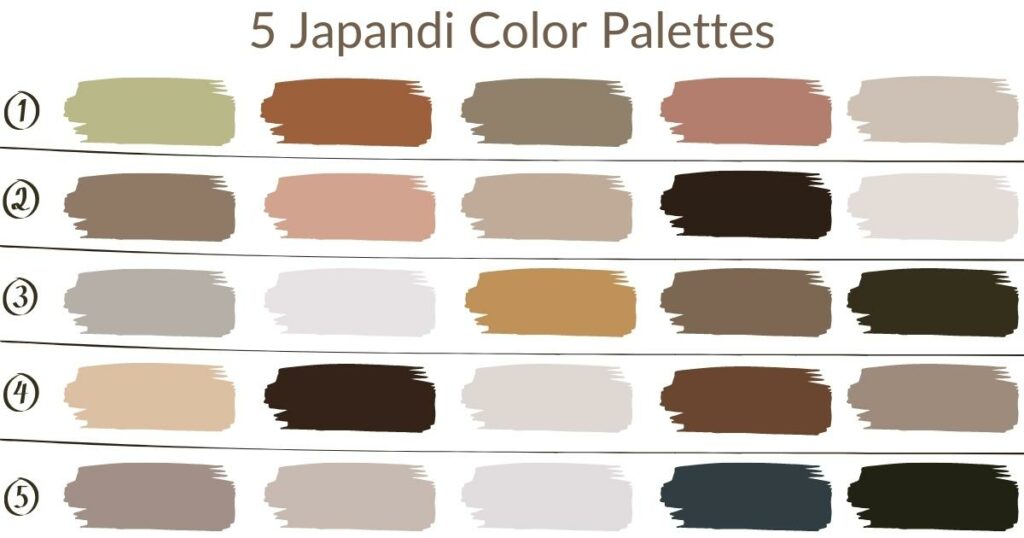
Japandi Patterns: A Pursuit of Simplicity
If there’s one thing I’ve learned about Japandi decor, it’s that simplicity is key, and patterns in Japandi curtains are no exception.
The patterns lean towards understated, minimalistic designs, often featuring organic shapes and lines that reflect natural elements.
This could be as simple as subtle stripes or as artistic as abstract representations of mountains, waves, or foliage.
In my home, I’ve chosen curtains with such minimal patterns.
They add a sense of depth and interest without becoming too overpowering or distracting.
What I particularly love is how these patterns tell a story—the rhythm of the waves, the tranquility of the mountains, the gentle sway of plants.
Each pattern, though simple, carries a piece of nature within it, enriching the space with a sense of life and movement.
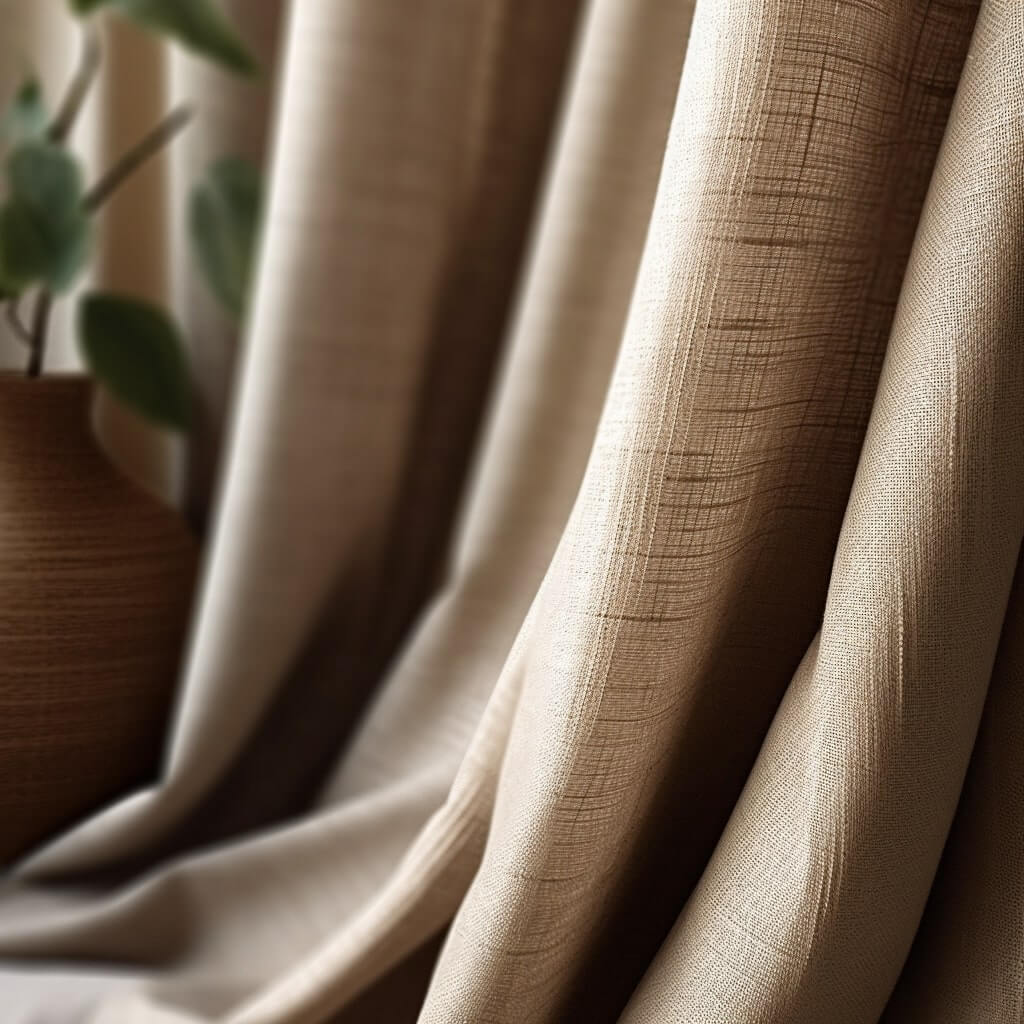
Materials in Japandi Curtains
The choice of materials in Japandi curtains is an essential part of what makes this style so alluring to me.
Natural Fabrics for an Organic Feel
In the spirit of connecting interiors to the natural world, Japandi curtains often feature natural fabrics.
When selecting my curtains, I found myself drawn to materials like linen, cotton, and occasionally, silk.
There’s an unpretentious elegance to these fabrics that speaks volumes about the ethos of Japandi style – an unyielding respect for nature and an emphasis on authenticity.
These fabrics not only provide an organic feel to the curtains but also contribute significantly to the overall ambiance of the room, infusing it with warmth, comfort, and a sense of serene luxury.
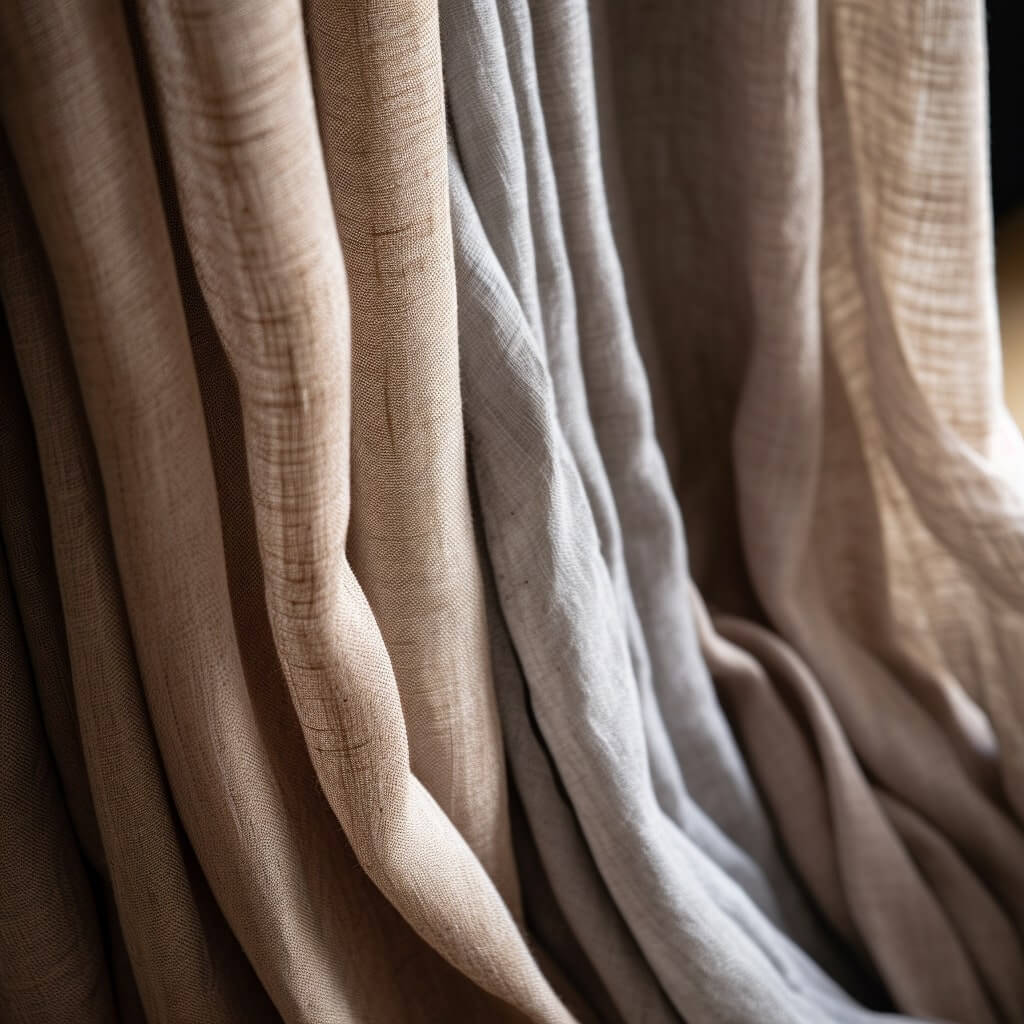
Craftsmanship in Japandi Textile Choices
Moreover, the craftsmanship that goes into creating these curtains is remarkable.
Every stitch and seam is a testament to the value Japandi places on high-quality, artisan-made goods.
It’s this emphasis on skill and precision that elevates Japandi curtains from being merely functional items to becoming pieces of art that reflect a deep appreciation for the mastery of textile work.
Feelings Evoked by Japandi Curtains
Japandi curtains do more than simply adorn your windows; they play a pivotal role in setting the mood and evoking certain emotions within a space.
In my own home, I’ve found that Japandi curtains foster an unparalleled sense of tranquility. Their simple designs, natural materials, and muted colors combine to create an atmosphere that is calming and balanced.
This peaceful ambiance is one of the hallmarks of Japandi style, and the curtains, with their quiet elegance, perfectly encapsulate this.
But it’s not just about aesthetics. Japandi curtains are equally about comfort and functionality.
Their natural fabrics provide excellent light diffusion, creating a soft, cozy atmosphere, while their design ensures they fulfill their functional purpose without compromising on style.
In a Japandi-inspired space, beauty goes hand in hand with practicality, and my Japandi curtains perfectly demonstrate this harmony.
They make my space not only look good but also feel comfortable and livable, enhancing my overall sense of wellbeing.
How to Choose Japandi Curtains
Choosing the right Japandi curtains can truly transform a room, and I’ve found a few key considerations to be instrumental in this process.
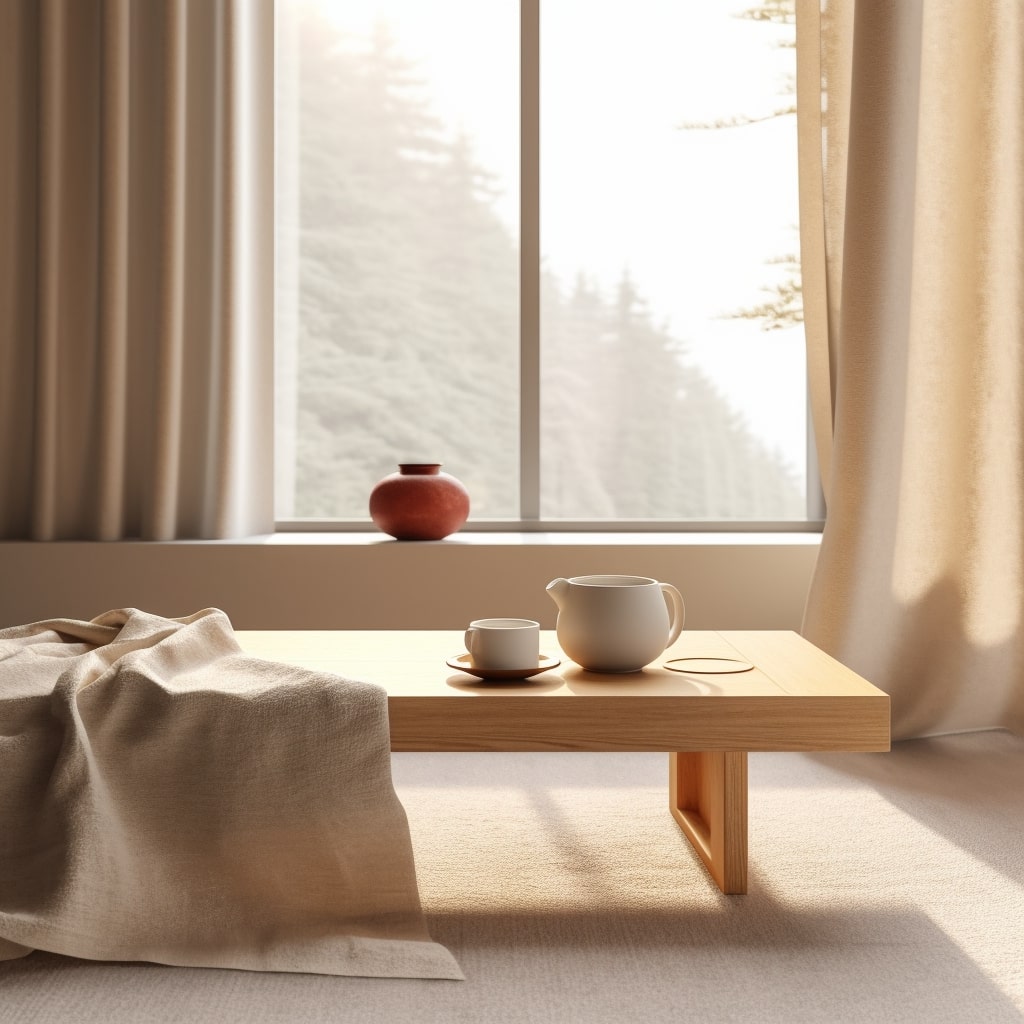
Light and Color
First, I examine the natural light in the room and the color scheme.
These factors influence the color of the curtains I choose.
Light, airy rooms might benefit from softer, lighter colors, while rooms with less natural light can afford to have darker, cozier curtain tones.
Choosing the Right Material
Next, I look at the material. Functionality is key in a Japandi home, and the curtains need to reflect that.
I consider factors like light filtration, privacy, and the room’s overall aesthetic when choosing the material.
Linen, for example, might work best for a living room, while a thicker cotton could be ideal for a Japandi bedroom.
Picking the Pattern
Finally, the pattern is a crucial element. I’ve found that no patter, or a simple, nature-inspired pattern are often the best fit for the Japandi aesthetic, subtly enhancing the room without overwhelming it.
Top Places to Buy Japandi Curtains
Finding the perfect Japandi curtains can seem daunting, but I’ve discovered some go-to places that make the task quite enjoyable.
Exploring Online Marketplaces
Online marketplaces like Etsy and Amazon are treasure troves.
They offer a wide variety of Japandi curtains, catering to different tastes and budgets. I’ve found some of my favorite pieces on these platforms, each with its unique charm.
Specialty Stores
For authentic Japandi designs, I often turn to specialty stores like Muji and Nitori.
These stores truly embody the Japandi philosophy, offering beautifully crafted curtains that blend Japanese and Scandinavian aesthetics seamlessly.
Custom-made Japandi Curtains
If you’re looking for something tailored to your exact taste, custom-made Japandi curtains might be the answer.
Local artisans or online platforms like Spoonflower offer bespoke services, allowing you to create curtains that perfectly complement your space.
For me, there’s something incredibly special about owning a piece that’s been crafted just for you.
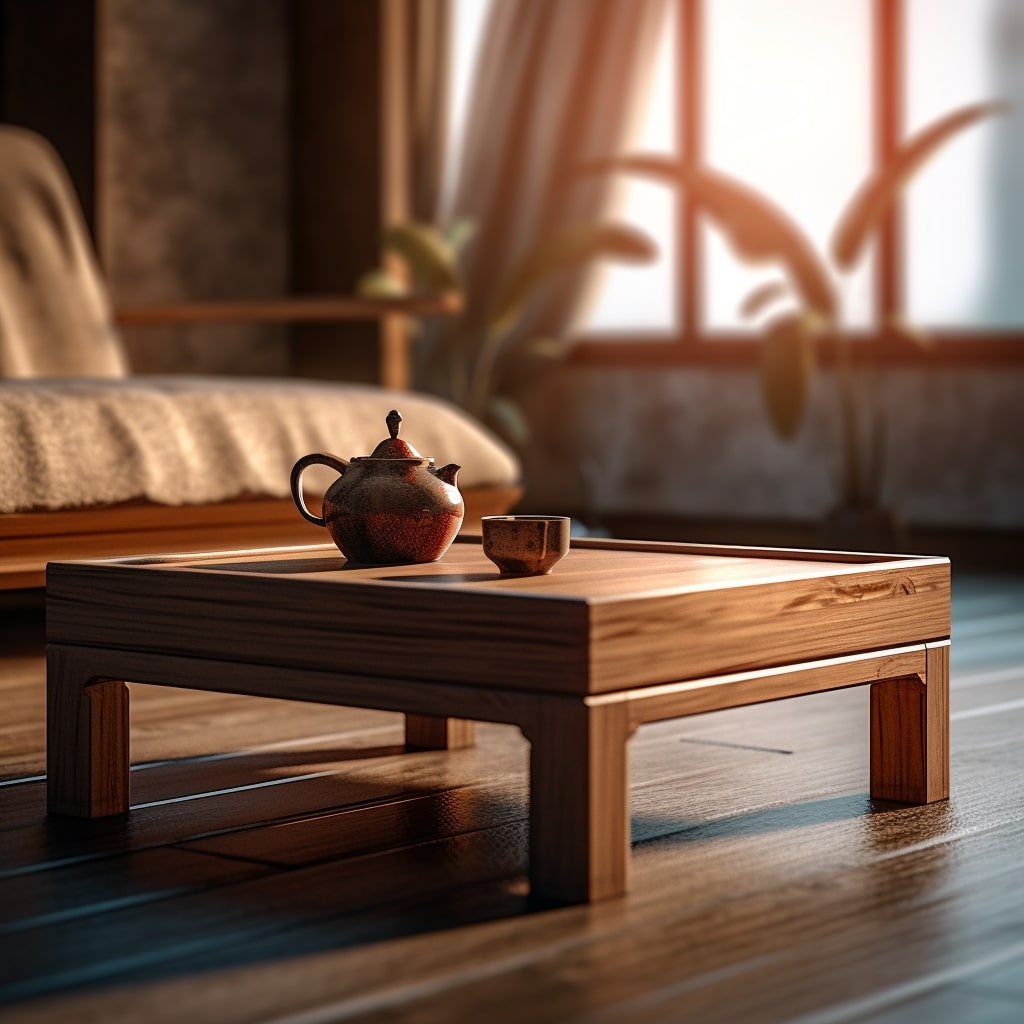
Caring for Your Japandi Curtains
Proper care can extend the life of your Japandi curtains, keeping them looking fresh and beautiful.
Simple maintenance practices like regular gentle vacuuming can help keep dust and dirt at bay.
For deeper cleaning, it’s always best to refer to the care label or consult with the manufacturer, as different fabrics may have specific care requirements.
Natural fabrics, common in Japandi curtains, often need gentle handling.
Avoid harsh detergents and hot water when washing.
Air drying is usually preferable to machine drying to maintain the fabric’s integrity and longevity.
With these practices, your curtains will continue to grace your space for years to come.
FAQs
What is the difference between Scandi and Japandi?
The difference between Scandi and Japandi lies in their cultural origins and aesthetics. While Scandi style is rooted in Scandinavian design principles, focusing on functionality and simplicity, Japandi is a fusion of Scandinavian and Japanese aesthetics, embodying minimalism, nature-inspired elements, and craftsmanship.
What is Japandi style?
Japandi style is a hybrid aesthetic combining Japanese and Scandinavian designs. It emphasizes minimalism, natural elements, muted tones, functionality, and high-quality craftsmanship.
How do you pronounce Japandi?
Japandi is pronounced as “juh-PAN-dee.”
What are Japandi blinds like?
Japandi blinds, like the rest of Japandi decor, favor natural materials, such as bamboo or wood. They typically feature simple, clean lines and neutral tones, embodying a sense of tranquility and harmony with nature.
What are some Japandi window treatments?
Japandi window treatments include minimalistic curtains or blinds in natural fabrics and earthy tones, bamboo shades, and sheer voile panels. The aim is to create a serene, uncluttered view that aligns with nature.







